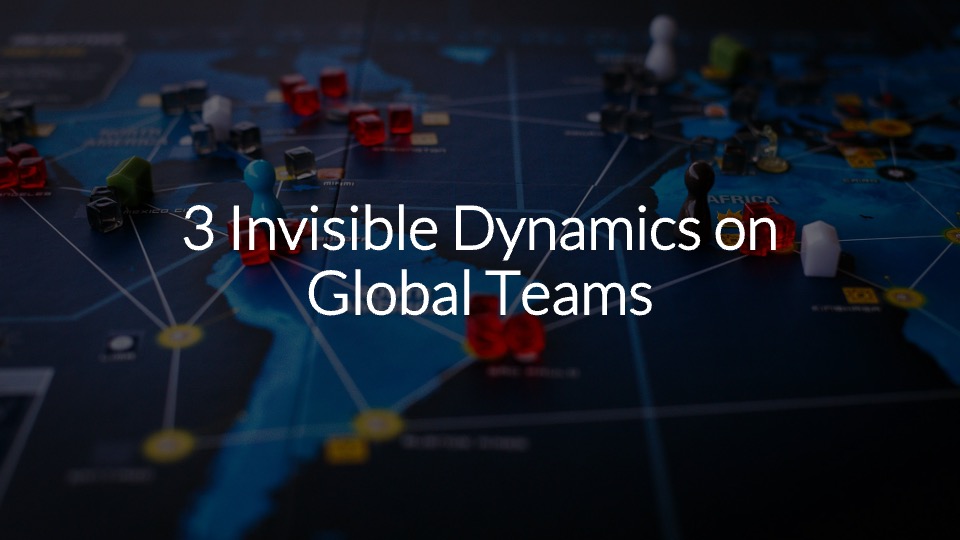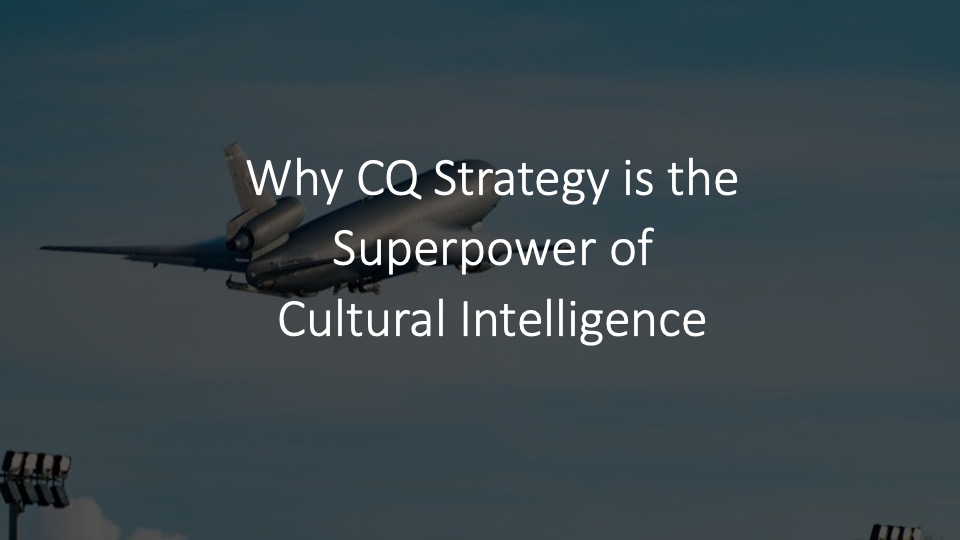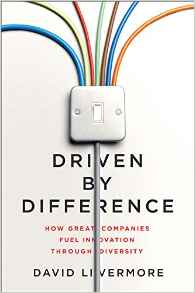DRIVEN BY DIFFERENCE: Releases February 17
Pre order now.
The following is an excerpt from an interview about the book:
Q: What prompted you to write this book?
A: I’m insatiably curious. That’s what drives any research or writing project I pursue. And the same is true for this book. I was reviewing some of our research that revealed a troubling finding—homogenous teams often perform better than diverse teams do. Homogenous teams get things done more quickly and as a result, they consistently come up with more innovative solutions than diverse teams do when left to themselves. That’s not a very popular message in an age when everybody is talking about the importance of diversity.
However, diversity unquestionably offers a rich resource for innovative solutions. It’s just that it’s not automatic. It requires a culturally intelligent strategy for effectively using a team’s diversity to come up with more innovative solutions. Our research findings revealed some recurring practices that are essential for tapping the potential of diversity. I wasn’t content to simply see those findings reported in the tables of an academic journal. I wanted to see these insights help teams and organizations in the real world.
___________
Q: You argue that hiring a diverse workforce is not sufficient. Why not?
A: If you’ve ever had a roommate, not to mention a spouse, you probably know the answer to this. “Different” ways of doing things is a novelty at first but under stress, differences can become the source of conflict and annoyance. It’s easier to work with people who think, act, and behave the same as us. So simply hiring a more diverse workforce is not sufficient. And it can actually make productivity and innovation worse.
Our research reveals that cultural intelligence is the moderating factor in whether diversity is an asset or liability for innovation. Cultural intelligence (CQ) is a research-based measurement that predicts how an individual will work and relate with people from different cultural backgrounds. Diverse teams comprised of members with low CQ, significantly underperform homogeneous teams. But diverse teams comprised of members with moderate or high CQ, significantly outperform homogenous teams on pretty much every measurement—not the least of which is innovation.
___________
Q: In the book, you mention a vital area of concern – diversity fatigue. What is diversity fatigue and how should it be addressed in the workplace?
A: Many individuals, particularly in workplaces across North America and Western Europe, can’t bear the thought of one more diversity workshop. Shame and an emphasis upon punitive measures for not embracing diversity are prevalent in many approaches to this topic and that rarely brings about lasting change. Other times, diversity measures are viewed as solely being about compliance or as having little to do with bottom line results.
On a brighter note, many organizations have moved toward an emphasis on teaching about unconscious bias—the automatic impulse an individual associates with certain cultural groups. I’m a big supporter of this effort and we’ve collaborated with some of the leading researchers at Harvard in this space.
Awareness is the first step. But it’s not enough. The question I often hear is, I know my biases. So now what? This is where cultural intelligence (skills) comes in. And then teams need to develop a strategy for using a fusion of their cultural differences to drive innovative results. Together, these solutions offer a fresh, sophisticated way of approaching diversity.
___________
Q: How did you discover the 5D Process for Culturally Intelligent Innovation?
A: As both a researcher and business leader, I’ve been helped immensely by the work of people like Clay Christiansen on disruptive innovation and the innovation models that come from Stanford’s d school. These models together with our research on cultural intelligence are what led to the discovery of the 5D process for culturally intelligent innovation.
The process includes the kinds of things included in most books and models on innovation, such as identifying a pain point, coming up with a solution to relieve that pain, and designing with the end-user in mind. What we wanted to discover however, was how those consistent innovation practices need to be adapted for a culturally diverse team of innovators or users.
For example, Jeff Bezos insists that high level meetings at Amazon include an empty chair, which represents the customer. Apart from cultural intelligence, you might assume a customer wants what you want. But by using the 5D process, a team can design for a diversity of customers. And if the room already includes a diverse team, that’s all the better because it provides built-in insights around what the customers represented by the empty chair want.
___________
Q: What is the number one issue that derails diverse teams and how can it be overcome?
A: I think it’s the absence of a strategy for how to effectively address and use the diversity on the team. By nature, we’re attracted and drawn to people who think and act like we do so without an intentional strategy to lean into and use the differences on a team, they inevitably create conflict and gridlock.
An effective strategy begins with looking at the two forms of diversity that most powerfully influence what happens on a team—visible diversity and underrepresentation. Instead of being afraid to name the differences, a culturally intelligent strategy explicitly identifies the differences and then creates processes that minimize the interpersonal conflict that ensues from the differences and maximize the informational diversity from the team.
Apart from a strategy for how to effectively use your diversity, it’s unlikely the diversity will lead to innovation and may actually work against it.
___________
Q: In your opinion, which companies are getting it right and how can others learn from them?
A: No leader or company gets it right all the time. In fact, mistakes are one of the best ways to improve cultural intelligence and come up with innovative solutions. But our research has uncovered dozens of companies that have worked hard at developing a strategy for culturally intelligent innovation. Several of them are featured throughout the book including Google, IKEA, Coca-Cola, Qatar Airways, and Novartis.
Novartis uses their employee resource groups to effectively design medications for culturally diverse patients. In the world of finance, you have CEOs like Ajay Banga (MasterCard) and Brian Moynihan (Bank of America) who personally chair their companies’ diversity and inclusion councils because they believe there’s a direct link between their diversity efforts internally and customer satisfaction. And despite the diversity challenges facing most tech companies, Jack Ma, founder of Alibaba, says, “One of the secret sauces for Alibaba’s success is that we have a lot of women.” Women hold 47 percent of all jobs at Alibaba and 33 percent of all senior positions.
___________
Q: If readers took only one thing away from the book, what would you hope it would be?
A: It’s my hope that all of us will slow down the impulse to view a different perspective as threatening, wrong, or inferior and instead, to see it as an opportunity for growth.
In those moments when we see things differently from those around us, we have a few choices: We can hold on to our views, defend them, and argue for their superiority. We can let go of our views and entirely acquiesce to the views of others. Or we can allow our perspectives to be broadened, enriched, expanded, and deepened. Culturally intelligent innovation begins with changing our impulse from Why can’t you see it like I do? to Help me see what I might be missing! Together, we can work together to come up with innovative solutions to solve problems big and small.




